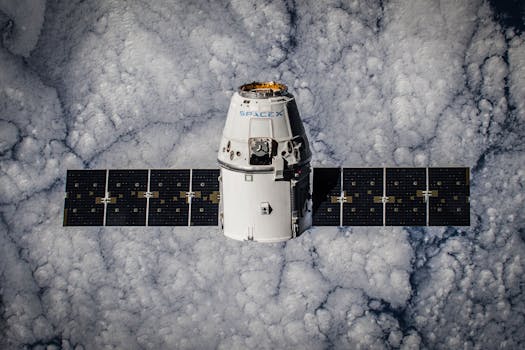Beyond the Atmosphere: The Future of Satellite Technology for Surveillance and Connectivity – Satellite

Beyond the Atmosphere: The Future of Satellite Technology for Surveillance and Connectivity – Satellite technology has come a long way since the launch of the first artificial satellite, Sputnik, in 1957. Today, satellites play a crucial role in our daily lives, from providing global communication and navigation services to monitoring the environment and predicting weather patterns. As we continue to push the boundaries of space exploration, the future of satellite technology is looking brighter than ever, with significant advancements in surveillance and connectivity.
The use of satellites for surveillance has become increasingly important in recent years, with applications in areas such as national security, environmental monitoring, and disaster response. With the ability to collect high-resolution images and data from space, satellites can provide valuable insights into activities on the ground, helping to detect and prevent potential threats. For instance, satellite imagery can be used to monitor troop movements, track the spread of diseases, and identify areas of deforestation. Furthermore, satellites can also be used to provide early warnings for natural disasters such as hurricanes, wildfires, and earthquakes, allowing for more effective evacuation and response strategies.
One of the most significant advancements in satellite technology is the development of small satellites, also known as cubesats. These tiny satellites, which are typically around the size of a shoebox, are much cheaper and easier to launch than traditional satellites, making them an attractive option for a wide range of applications. Cubesats can be used for everything from Earth observation and communication to scientific research and technology demonstration. With the ability to launch multiple cubesats at once, scientists and engineers can collect vast amounts of data from space, providing new insights into the Earth’s atmosphere, oceans, and land surfaces.
In addition to surveillance, satellites are also playing a critical role in providing global connectivity. With the launch of satellite constellations such as OneWeb and Starlink, people in remote and underserved areas are gaining access to high-speed internet for the first time. These satellite constellations, which consist of hundreds or even thousands of individual satellites, can provide coverage to the entire globe, bridging the digital divide and enabling new opportunities for economic growth and development. For example, satellite internet can be used to provide online education and healthcare services, connect remote communities, and support emergency response efforts.
Another area of research and development in satellite technology is the use of advanced materials and propulsion systems. New materials such as graphene and nanomaterials are being explored for their potential to improve the performance and efficiency of satellites, while advanced propulsion systems such as ion engines and Hall effect thrusters are being developed to enable longer mission durations and more precise orbit control. Additionally, the use of artificial intelligence and machine learning is becoming increasingly important in satellite technology, with applications in areas such as data analysis, autonomous systems, and cybersecurity.
In conclusion, the future of satellite technology is looking bright, with significant advancements in surveillance and connectivity. As we continue to push the boundaries of space exploration, we can expect to see new innovations and applications emerge, from the use of small satellites and advanced materials to the development of satellite constellations and artificial intelligence. With the ability to collect vast amounts of data from space and provide global connectivity, satellites will play an increasingly important role in shaping our world and addressing some of the most pressing challenges we face.
As we look beyond the atmosphere, we can expect significant improvements in global communication and monitoring capabilities, enabling us to better understand our planet and address the complex problems we face. The future of satellite technology is full of possibilities, and it will be exciting to see how it continues to evolve and shape our world in the years to come.